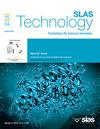使用小型切向流过滤系统的抗体-药物偶联物单步纯化和配方
IF 3.7
4区 医学
Q3 BIOCHEMICAL RESEARCH METHODS
引用次数: 0
摘要
抗体-药物偶联物(adc)是一种很有前途的治疗方式,可以将细胞毒性药物传递到表达相应抗原的靶细胞。然而,由于adc结构复杂和脆弱,在保证产品安全性、均匀性和稳定性的同时进行纯化是一项具有挑战性的任务。粒径排除色谱法(SEC)是ADC的常规纯化方法,由于需要多次清洗柱和平衡步骤,因此非常耗时。此外,adc的后续配方通常使用终端过滤(DEF),这进一步复杂化了生产流程。我们将SEC+DEF与µPulse®进行了比较,µPulse®是一种小型化、自动化的切向流过滤系统,用于adc的纯化和配方。质量分析表明,这两种方法都同样温和,因为在纯化的样品中观察到类似的药物-抗体比率(dar)和单体纯度。最重要的是,两种方法的清除效率相当,游离连接剂浓度降低99.8%。µPulse的内毒素负荷为0.11 EU mg-1, SEC+DEF的内毒素负荷为0.07 EU mg-1,确保了纯化adc在生命系统中的安全应用。然而,与SEC+DEF相比,µPulse可以同时进行adc的纯化和配制,后者需要多次人工干预。我们的研究结果表明,µPulse是一种温和的、单步的、走开的adc纯化方法。本文章由计算机程序翻译,如有差异,请以英文原文为准。
Single-step purification and formulation of antibody-drug conjugates using a miniaturized tangential flow filtration system
Antibody-drug conjugates (ADCs) are a promising therapeutic modality that enables the delivery of cytotoxic drugs to the target cells that express the corresponding antigen. However, the purification of ADCs while ensuring product safety, homogeneity, and stability is a challenging task due to their complex and fragile structure. Size exclusion chromatography (SEC), the conventional method for ADC purification, is time-consuming as it requires multiple column washes and equilibration steps. Moreover, subsequent formulation of ADCs, typically using dead-end filtration (DEF), further complicates the production workflow. We compared SEC+DEF with the µPulse®, a miniaturized and automated tangential flow filtration system, for purification and formulation of ADCs. Quality analysis revealed that both approaches were equally gentle as comparable drug-to-antibody ratios (DARs) and monomer purities were observed in the purified samples. Most importantly, both methods exhibited equivalent cleanup efficiency with a 99.8% reduction in free linker-drug concentration. The endotoxin loads comprised 0.11 EU mg-1 for the µPulse and 0.07 EU mg-1 for SEC+DEF, ensuring validation of the safe application of purified ADCs in living systems. However, the µPulse performed purification and formulation of ADCs simultaneously as compared to SEC+DEF, which required multiple manual interventions. Our results indicate that the µPulse is a gentle, single-step, and walk-away approach for the purification of ADCs.
求助全文
通过发布文献求助,成功后即可免费获取论文全文。
去求助
来源期刊

SLAS Technology
Computer Science-Computer Science Applications
CiteScore
6.30
自引率
7.40%
发文量
47
审稿时长
106 days
期刊介绍:
SLAS Technology emphasizes scientific and technical advances that enable and improve life sciences research and development; drug-delivery; diagnostics; biomedical and molecular imaging; and personalized and precision medicine. This includes high-throughput and other laboratory automation technologies; micro/nanotechnologies; analytical, separation and quantitative techniques; synthetic chemistry and biology; informatics (data analysis, statistics, bio, genomic and chemoinformatics); and more.
 求助内容:
求助内容: 应助结果提醒方式:
应助结果提醒方式:


